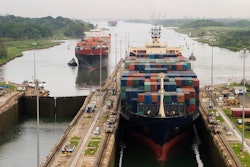
A new report from ITS Logistics reveals that operations at ocean terminals throughout the United States are running at normal levels and are expected to do so for the remainder of the year. Looking to 2024, trucking capacity is expected to continue exiting the market and could be compounded by California’s ban on new internal combustion truck registrations for drayage. West Coast ports also face the possibility of significant congestion, the levels of which have not been seen in almost a year.
“Today’s lower inventory levels could equal a more pronounced Lunar New Year peak than we saw in 2023,” says Paul Brashier, VP of drayage and intermodal for ITS Logistics. “Combine that with transpacific volumes being diverted from the East Coast as shippers avoid both the Panama and Suez Canal and it could quickly cause significant congestion.”
Key takeaways:
- Exiting capacity in the market could worsen congestion and increase rates. ACF drayage truck requirements in California ban any new registration of internal combustion trucks, which is expected to have a chilling effect on capacity and potentially drive more of it out of the market.
- There is also the potential for ILA labor unrest at the East and Gulf Coast ports, which could drive even more volume to West Coast ports and increase the chances of disruption.
- Compared to October of this year, U.S. ports handled 2,099,408 twenty-foot equivalent units of imports in November. This was 9% less than in October, but volumes increased by up to 7.4% vs. November 2022. Despite supply chain challenges, imports from January to November are up 4% vs. the same period in 2019, supporting the fact that imports have continued to outpace pre-COVID-19 levels. The data found in this month’s index reveals demand spikes in November and early December for Savannah, New York/New Jersey, Los Angeles/Long Beach, Dallas, and Chicago.
- As the Panama Canal continues to experience congestion for non-containerized cargo due to water levels and additional charges on containerized goods, navigating the canal may cause some inflationary pressure. Vessels navigating the Suez Canal should soon see increased insurance costs, which is likely to create additional inflationary pressure as well, posing the potential risk of vessels avoiding the canal altogether.
“ILA labor negotiations will be ongoing up until September,” says Brashier. “If labor unrest occurs and more volume is driven west, it will be interesting to see if the West Coast ports and infrastructure is prepared to handle that surge in volume as capacity exits the market.”




















